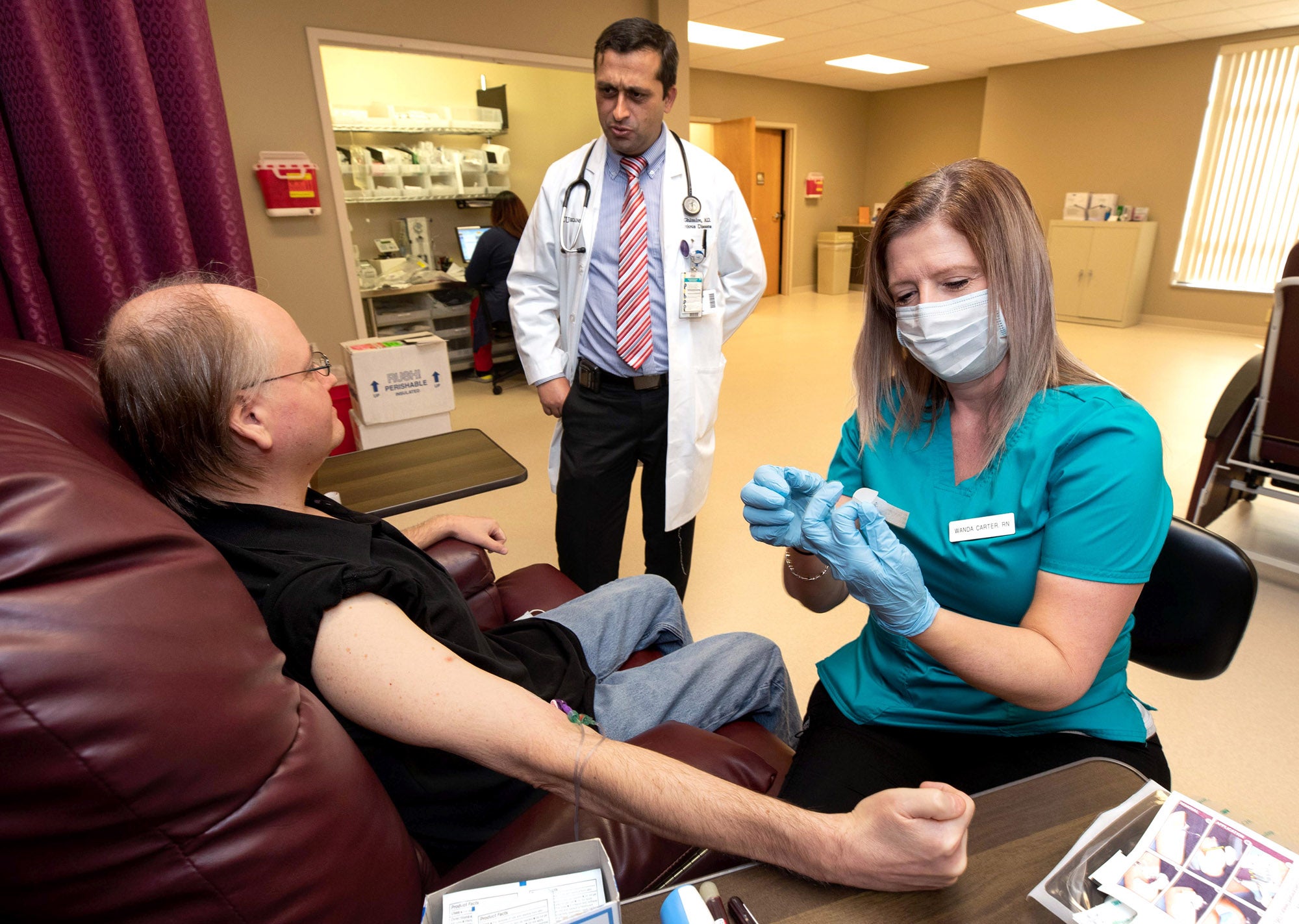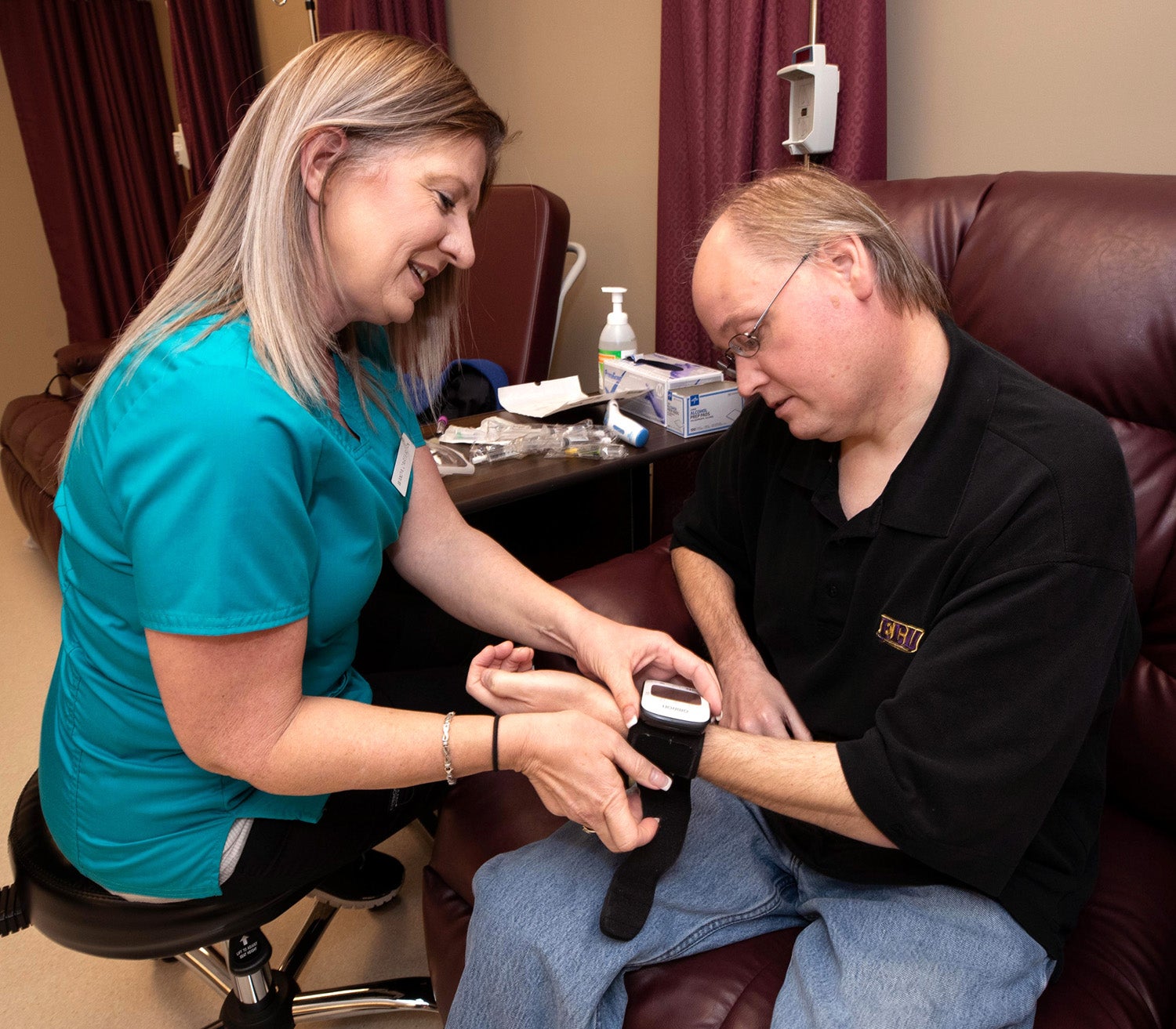MORE EFFICIENT CARE, FOR LESS
ECU Physicians opens state-of-the-art infusion center
Eastern North Carolina residents in need of long-term intravenous antibiotic treatments now have an alternative to receiving those treatments in a hospital.
ECU Physicians, the medical practice for the Brody School of Medicine at East Carolina University, recently opened a designated infusion center supervised by a team of infectious disease specialists – a rarity in eastern North Carolina.
Prior to the infusion center opening, patients typically had to go to an area hospital to receive their intravenous antibiotic treatments.
Dr. Rabindra Ghimire, an assistant professor in ECU’s Division of Infectious Diseases and International Travel Health, said this often resulted in lengthy hospitalizations, subjected patients to higher costs and increased exposure to hospital-acquired infections.
ECU Physician’s new state-of-the-art infusion center, located at 2390 Hemby Lane in Greenville, is an effort to change that.

ECU infectious disease specialist Dr. Rabindra Ghimire checks on Greenville resident Jason Glisson as he receives intravenous antibiotics at ECU Physicians’ new infusion center.
The ECUP infusion center can treat patients with a range of infections – from those in bones and heart valves to those in skin and soft tissues. Most treatment regimens require a visit weekly or every other day, depending on the type of antibiotic needed and a patient’s insurance requirements. Individual treatments can take anywhere from 30 minutes to a few hours.

Nurse Wanda Carter prepares Greenville resident Jason Glisson for an intravenous antibiotic treatment at ECU Physicians’ new infusion center on Hemby Lane in Greenville.
“We have patients who go to the hospital with infections, but who do not need to stay in the hospital,” Ghimire said. “We can give them antibiotics here instead and monitor their results and follow up with them all in one place. So we are a way to avoid hospitalization.”
Greenville resident Jason Glisson has been receiving weekly intravenous treatments at the new infusion center since developing a post-operative infection in his foot in December.
“This is a great place and the staff is nice, so I’m glad it’s here because I don’t like going to the hospital,” Glisson said. “My appointments here take about 20 minutes, but if I have to go into the hospital it’s an all-day wait and I’m not a big fan of that.”
The infusion center’s onsite lab reduces the amount of time patients have to wait between bloodwork and treatment.
“[Before the infusion center opened] there was often a significant gap of time between when the blood test was done and when we got the results. Many times we would have liked to begin treatment earlier, but we couldn’t because of the way the system was set up,” Ghimire said. “With this new center, those issues are all gone. It’s also easier to follow the patients because they’re here with us every week.”
